In today's global marketplace, confirming export shipment details is crucial for ensuring smooth international transactions. It's essential to have a clear and concise communication process in place to avoid any potential disruptions. By outlining key shipment particulars, you can assure both your team and your clients that everything is on track. Want to dive deeper into how to effectively structure your confirmation letters?

Shipment Reference Number
The export shipment details associated with the Shipment Reference Number 123456789 include key information such as the destination (Tokyo, Japan), shipping method (air freight), and expected delivery date (November 15, 2023). The cargo consists of 500 kilograms of electronics (specifically, consumer electronics like smartphones and tablets), packed in five crates for secure transport. The bill of lading number (BL-987654) links this shipment to the forwarding agent (Global Logistics Corp), ensuring smooth customs clearance upon arrival. Additionally, all necessary documentation, including commercial invoices and packing lists, has been prepared to comply with Japanese import regulations.
Exporter and Consignee Details
The export shipment process involves key details, emphasizing the roles of the exporter (seller or manufacturer) and consignee (buyer or recipient). An exporter, based in locations like Singapore or Germany, must ensure compliance with international trade regulations, including documentation like invoices, packing lists, and bills of lading. The consignee, situated in destinations such as New York or Tokyo, should provide precise contact information, including company name, address, and telephone number, to facilitate smooth customs clearance. Various shipping methods, like sea freight for bulky goods or air freight for perishables, determine transit times and costs, significantly impacting the logistics flow of exporting goods. Proper confirmation of these details ensures timely delivery and minimizes the risk of shipment delays or customs issues.
Description of Goods
Export shipments require precise documentation to ensure compliance and clarity regarding the contents being transported. Goods description, a critical component, outlines the specific items included in the shipment, adhering to international trade regulations. For example, if the shipment includes 500 units of ceramic vases from the city of Jingdezhen, renowned for its high-quality porcelain production, it is essential to specify dimensions, weight, and materials used. Furthermore, details like country of origin (China), harmonized system code (HS code), and value of goods contribute to customs clearance processes. Misrepresentation or lack of detail in the description of goods can lead to delays, fines, and potential legal issues, underscoring the importance of accuracy in export documentation.
Shipment Date and Time
A detailed confirmation of export shipment includes essential information such as the scheduled shipment date and time. The shipment, typically prepared for international transport, involves documentation like the Bill of Lading and commercial invoice. Accurate timing is crucial; for example, a shipment planned for October 15, 2023, at 10:00 AM ensures that logistics providers can align resources accordingly. The loading location, often a warehouse or port facility, must be specified to facilitate efficient handling and transportation. Moreover, the destination port, such as the Port of Los Angeles, plays a crucial role in determining transit timelines and customs clearance procedures. Tracking numbers may also be included, allowing stakeholders to monitor the export's journey in real-time.
Shipping Method and Carrier Information
Please provide accurate shipment details to ensure successful export operations. Shipping methods (air freight, sea freight, or courier services like FedEx or DHL) will determine transit times and costs. Carrier information (including tracking number, carrier name, and contact details) facilitates monitoring shipment progress. Each shipment's specifics (cargo weight, dimensions, and destination country) affect shipping logistics, customs clearance, and associated documentation. Properly confirming these details prevents delays and ensures compliance with international trade regulations.

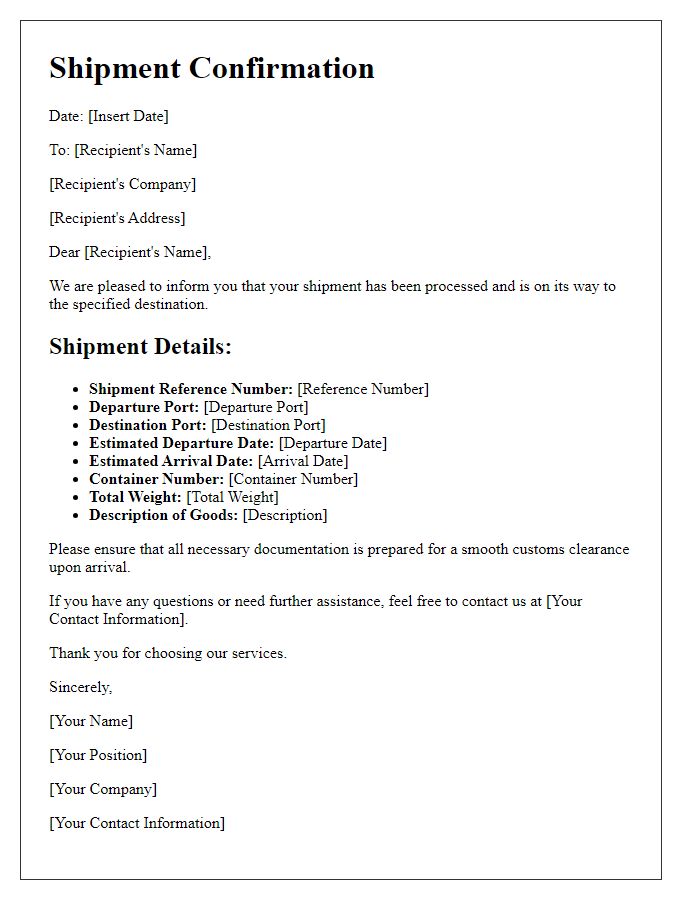
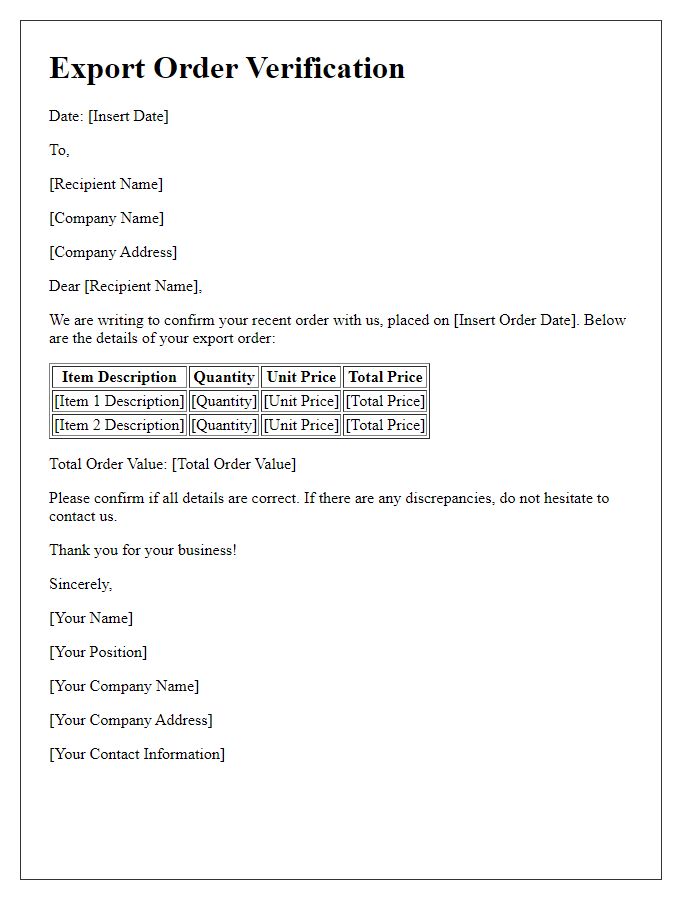
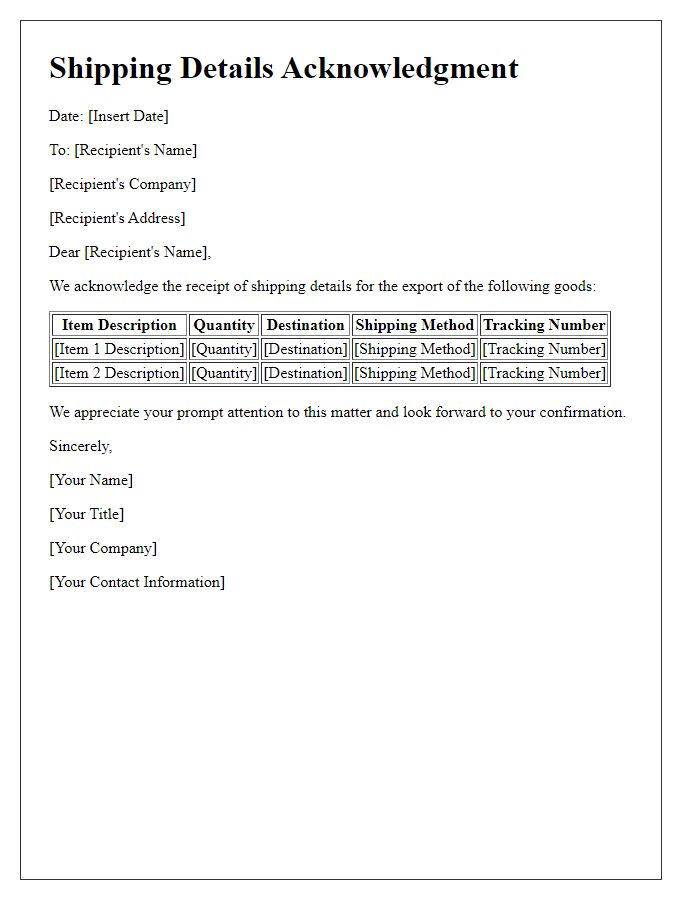
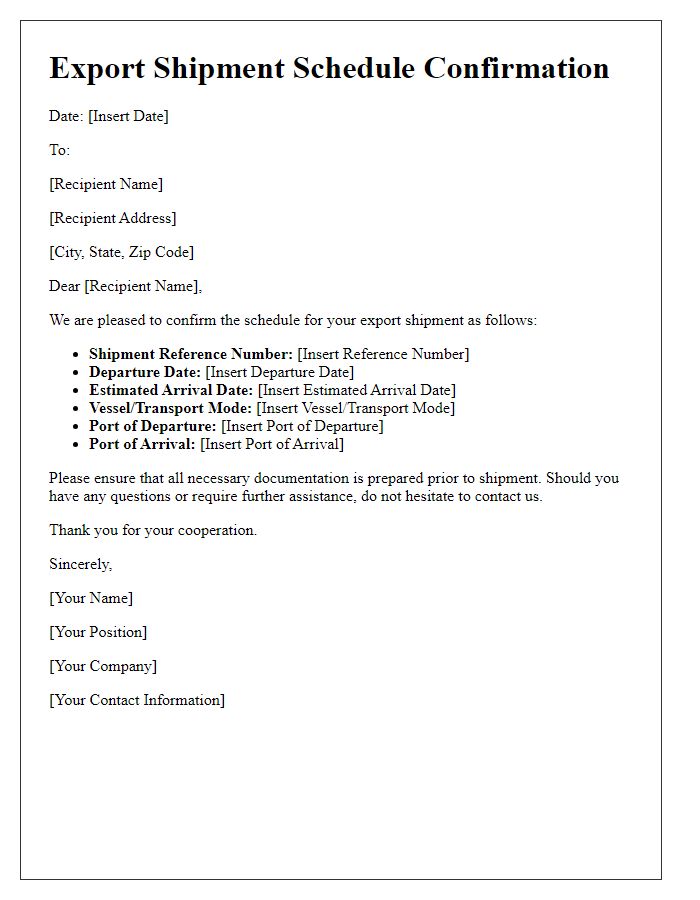
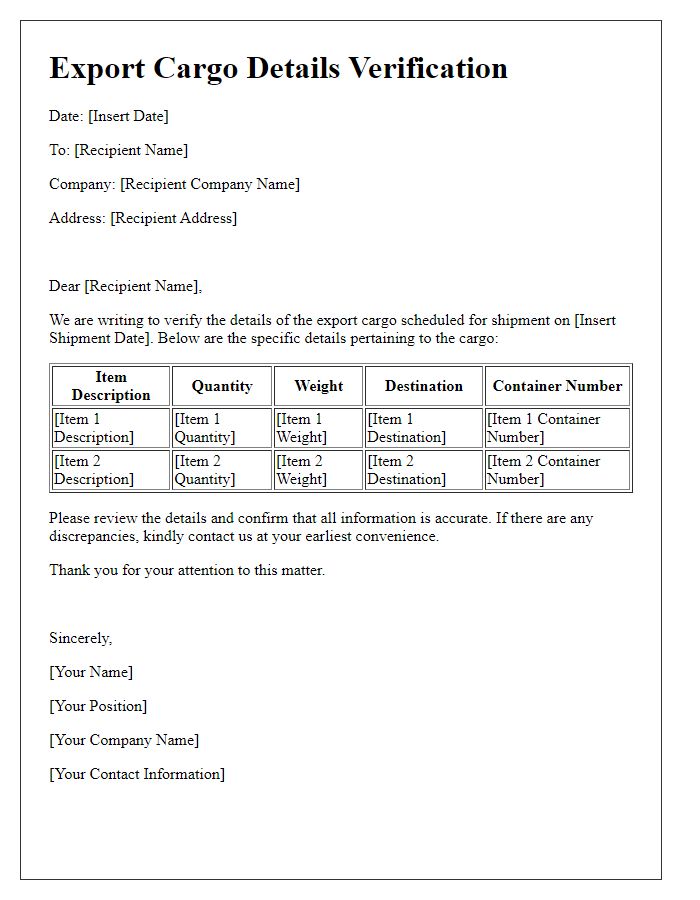
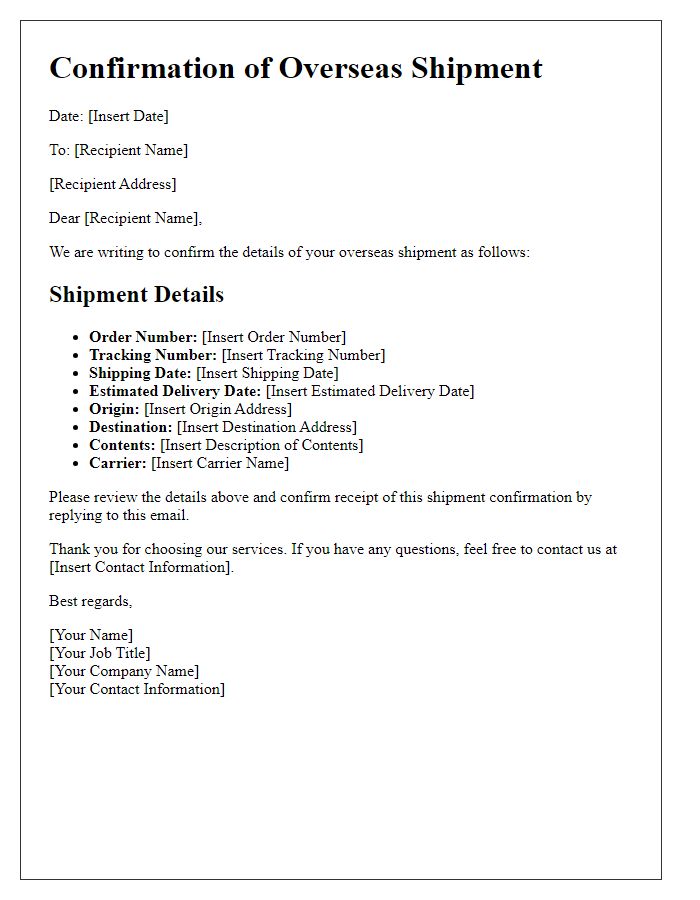
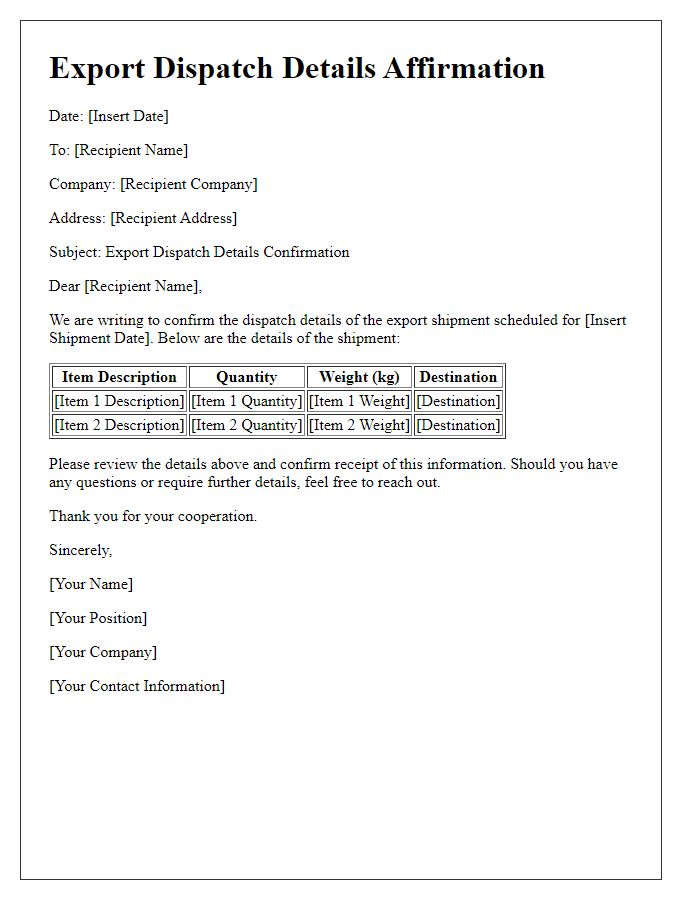
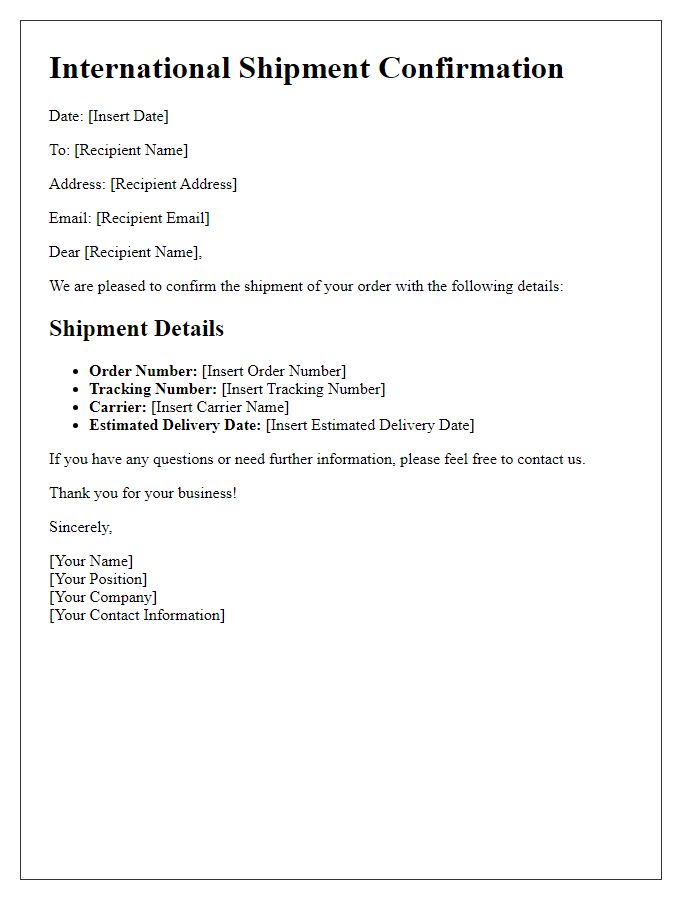
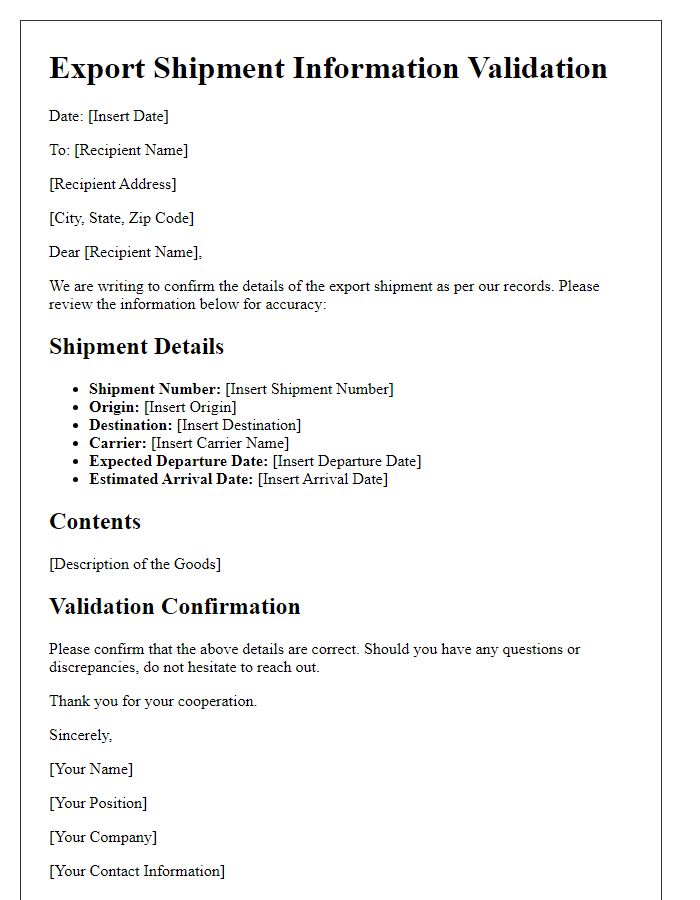
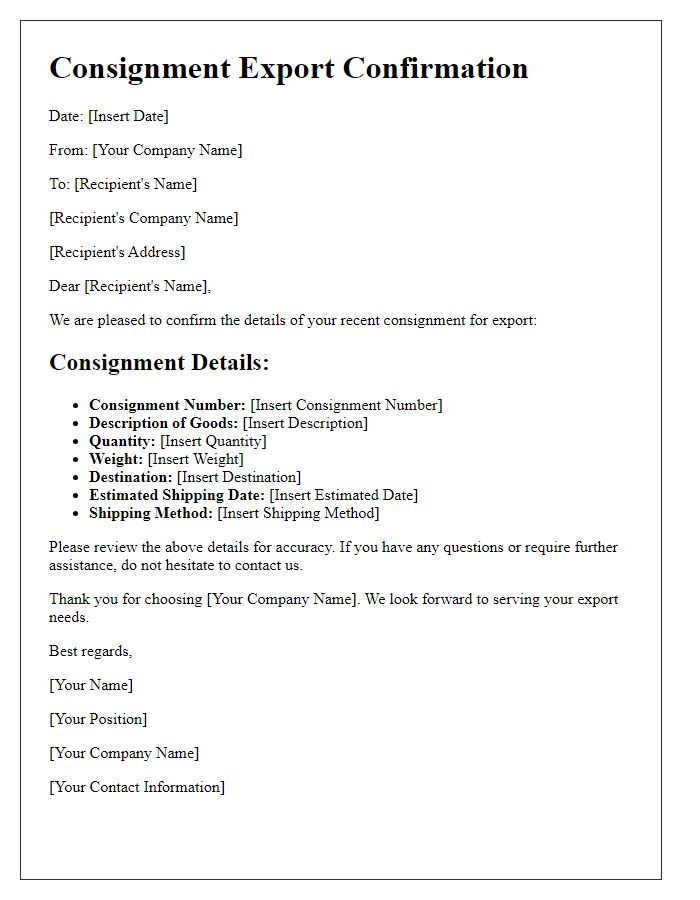


Comments